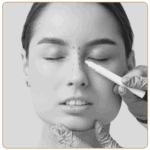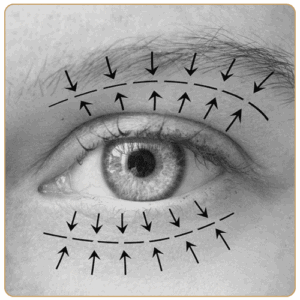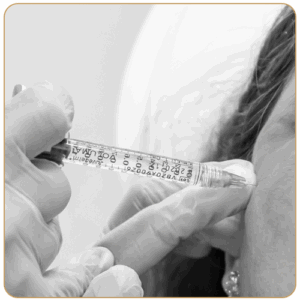Rhinoplasty, commonly known as a nose job, is a popular cosmetic procedure that can enhance the shape, size, or function of your nose. Whether you’re undergoing rhinoplasty to address aesthetic concerns or to improve nasal breathing, the recovery process is a crucial part of achieving the best results. A smooth and successful recovery will help ensure that you enjoy the benefits of your surgery with minimal complications. Here are some essential tips to guide you through the healing process after your rhinoplasty.
1. Follow Post-Operative Instructions Carefully
Your surgeon will provide detailed post-operative care instructions tailored to your specific procedure. Adhering to these guidelines is essential for a successful recovery. Instructions typically include information on how to care for your nasal splint, when to take prescribed medications, and how to manage any discomfort or swelling.
Key Instructions to Follow:
- Nasal Care: Keep your nasal splint dry and in place as instructed. Avoid touching or manipulating your nose.
- Medication: Take pain relievers and antibiotics exactly as prescribed to manage pain and prevent infection.
- Activity Restrictions: Follow guidelines on activity restrictions to avoid complications.
2. Manage Swelling and Bruising
Swelling and bruising around the eyes and nose are common after rhinoplasty. These symptoms typically peak within the first few days and gradually improve over the following weeks. To minimise swelling and bruising, follow these tips:
- Keep Your Head Elevated: Use extra pillows or sleep in a reclined position to keep your head elevated, even while sleeping. This helps reduce swelling.
- Apply Cold Compresses: Gently apply cold compresses to the areas around your eyes to reduce swelling and bruising. Be sure to use a cloth or towel between the ice pack and your skin to prevent frostbite.
- Avoid Heat: Steer clear of hot environments, such as saunas or hot showers, which can exacerbate swelling.
3. Rest and Avoid Physical Activity
Adequate rest is crucial for healing after rhinoplasty. Avoid strenuous activities and exercise for at least 4-6 weeks following your surgery. Physical exertion can increase blood flow to the nasal area, leading to more swelling and potentially affecting the results.
Tips for Rest:
- Take Time Off Work: Plan to take at least a week off work or school to allow yourself time to rest and recover.
- Avoid Bending Over: Avoid activities that require bending over or lifting heavy objects, as these actions can increase nasal swelling.
4. Follow a Healthy Diet and Stay Hydrated
Nutrition plays a significant role in your body’s healing process. Maintaining a balanced diet and staying hydrated will support your recovery and overall health.
Dietary Tips:
- Eat Nutrient-Rich Foods: Focus on consuming a variety of fruits, vegetables, lean proteins, and whole grains to provide essential vitamins and minerals.
- Stay Hydrated: Drink plenty of water to stay hydrated and help flush out any medications or anaesthesia from your system. Avoid excessive salt and alcohol, as they can contribute to swelling.
5. Avoid Smoking and Alcohol
Smoking and alcohol can interfere with your body’s ability to heal properly. Smoking reduces blood flow and can lead to complications, while alcohol can increase swelling and affect the effectiveness of medications.
Recommendations:
- Quit Smoking: If you smoke, consider quitting before and after your surgery to promote better healing.
- Avoid Alcohol: Refrain from consuming alcohol for at least two weeks after your procedure, or as advised by your surgeon.
6. Protect Your Nose
Protecting your nose from injury or trauma is essential during the healing process. The nasal tissues are delicate and need time to fully heal and settle into their new shape.
Protection Tips:
- Avoid Physical Contact: Steer clear of activities that could bump or injure your nose, such as sports or rough play.
- Be Cautious with Glasses: If you wear glasses, use contact lenses instead until your surgeon gives you the go-ahead to resume wearing them. Glasses can put pressure on your nose and affect the healing process.
7. Attend Follow-Up Appointments
Regular follow-up appointments with your surgeon are vital for monitoring your progress and ensuring that your recovery is on track. These appointments allow your surgeon to check for any complications, assess your healing, and make any necessary adjustments.
What to Expect:
- Initial Follow-Up: Your first follow-up appointment is typically scheduled within a week of your surgery to remove splints and check your recovery.
- Ongoing Monitoring: Additional follow-up visits may be needed over the next several months to monitor your progress and address any concerns.
8. Be Patient with Your Results
It’s important to have realistic expectations and be patient with the healing process. While initial swelling and bruising will subside relatively quickly, the final results of your rhinoplasty may take several months to fully manifest.
Expectations:
- Initial Results: You will see improvements in your nose shape as swelling decreases over the first few weeks.
- Final Results: The final shape of your nose may not be fully apparent for 6-12 months as residual swelling resolves and the tissues settle.
Conclusion
Recovering from rhinoplasty requires careful attention to post-operative care, patience, and commitment to following your surgeon’s recommendations. By managing swelling, protecting your nose, maintaining a healthy lifestyle, and attending follow-up appointments, you can ensure a smooth healing process and achieve the best possible results from your procedure.










